When first created in the 1930s, NYCHA devoted more attention to open spaces than other American housing authorities. “Living in the Shade” opened last week in a Downtown Brooklyn gallery, and will be on view through Feb. 27 before moving to LaGuardia Community College.
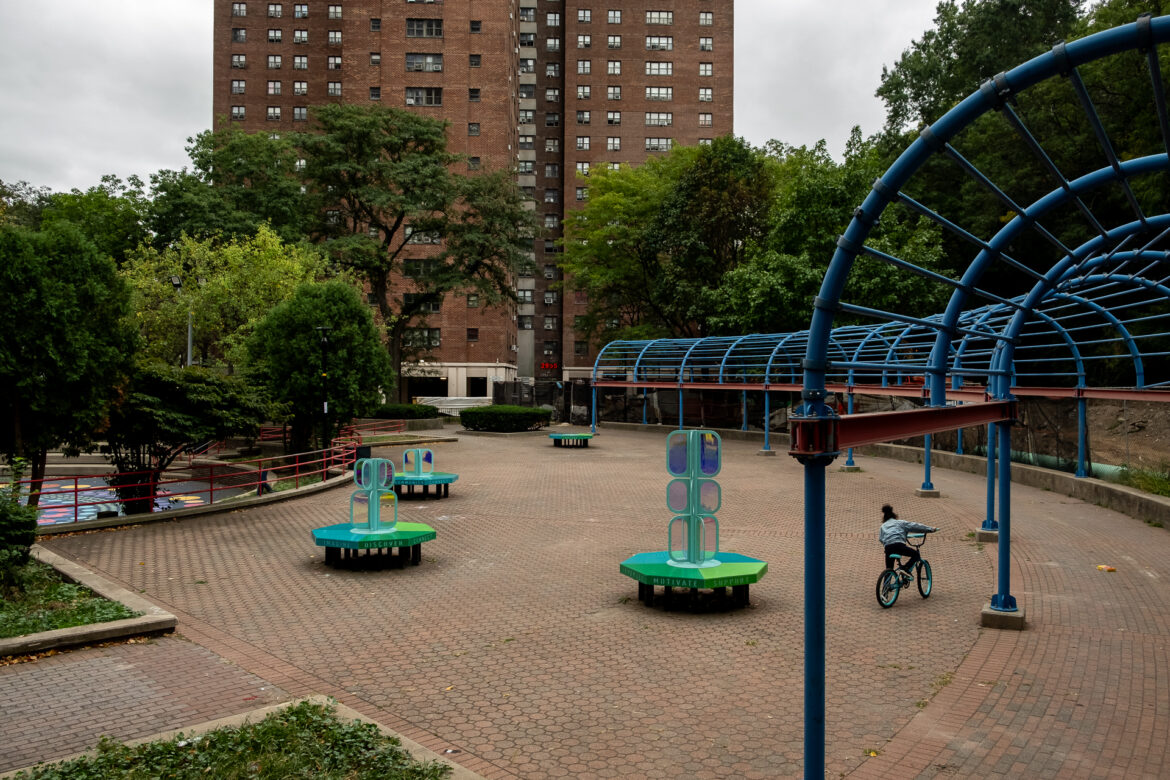
Adi Talwar
A play space at NYCHA’s Polo Grounds Towers in Harlem.A new exhibition heaps praise on oft-criticized NYCHA, calling upon the authority’s origins and one of its most impressive features—open spaces—to express a vision for what the city’s public housing might still be, despite challenges posed by climate change and chronic underfunding.
When first created in the 1930s, NYCHA devoted more attention to open spaces than other American housing authorities. Its plentiful greenery could even compete with some of the finest private housing the city had to offer, according to the exhibition’s curators, architect Matthias Altwicker and urban historian Nicholas Dagen Bloom, both professors at local colleges.
The exhibition, “Living in the Shade,” which opened last week in a Downtown Brooklyn gallery, uses text, images and large models to explore what Altwicker and Bloom see as one of NYCHA’s most admirable qualities: its large, open outdoor spaces.
Funded in part by the nonprofit Public Housing Community Fund, the exhibition recreates the vision of early leaders who believed that low-income New Yorkers deserved better. According to Bloom’s book, “Public Housing That Worked: New York in the Twentieth Century,” New York’s leaders were inspired by “the European vision of housing as a tool of civic and humanitarian uplift” that would offer a luxurious alternative to then-common, barely livable private tenements.
The resulting garden apartments were so nice that in 1937, when NYCHA’s Harlem River Houses opened, they attracted controversy. “People were like, ‘Hey, why is the government building such beautiful housing for lower income people?’” Bloom said. “The people in public housing were like, ‘Yeah, of course, we want to build something that’s going to last, that’s going to be beautiful, that’s going to contribute to neighborhoods.’”
NYCHA complexes have large amounts of open space and so much tree cover they actually make the areas feel cooler than the rest of the city, according to the exhibition.
In their earliest incarnations, NYCHA campuses emphasized “passive recreation” such as walking paths or benches for sitting in the shade. The baby boom, beginning in the late 1940s, made clear the need for something new. Without many basketball courts or other forms of “active recreation,” swarms of boomers played on elevators and partially demolished buildings.
Innovative NYCHA employees—and residents themselves—took matters into their own hands, creating makeshift playground equipment. They made “dodgers,” large slabs of concrete or wood fashioned into a web of open-air boxes. “You would just duck and hide and jump over” them, Altwicker said. “They’re considered very dangerous.” Soon, policymakers such as Robert Moses led the way toward more professionally designed active recreation, creating many more basketball and handball courts, plus new playgrounds for kids to play on.
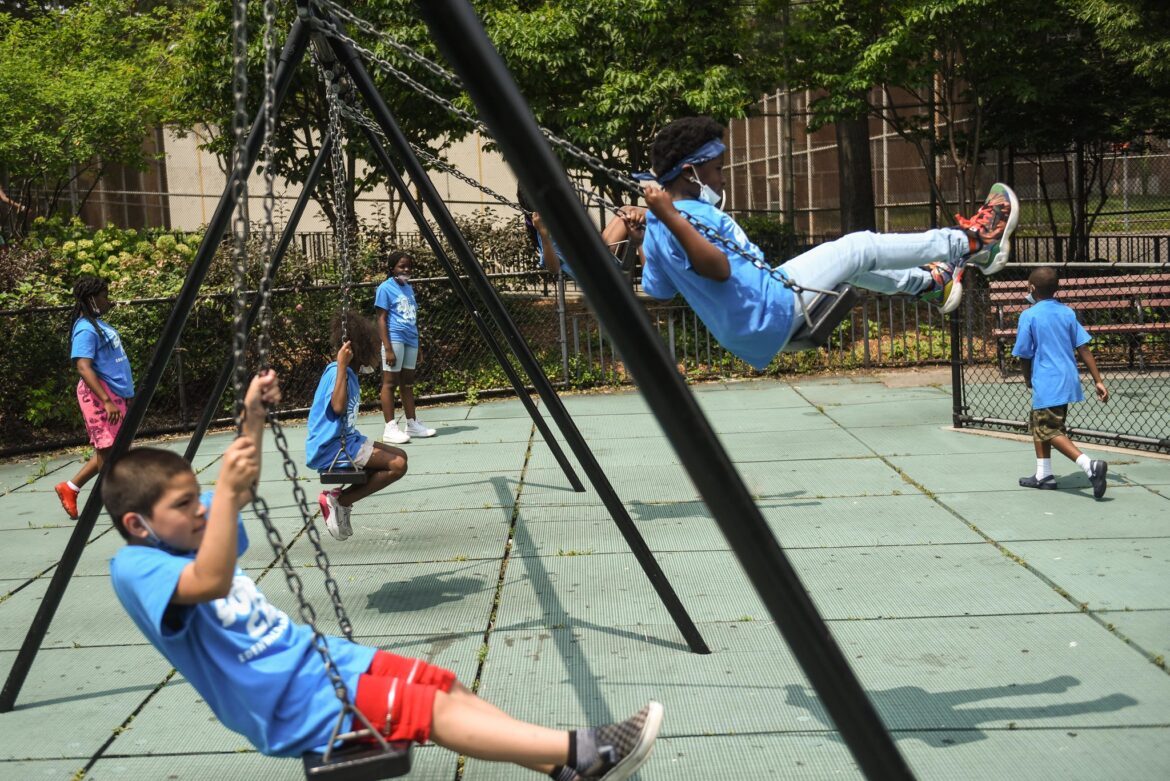
Michael Appleton/Mayoral Photography Office
The playground at NYCHA’s Edenwald Houses, pictured here in 2021.Over the past 20 years, there’s been a renewed attempt to beautify NYCHA’s open spaces while serving real needs—think farms, murals and the new neurodiverse playscape at Polo Grounds in Harlem. As the city faces a housing shortage, local leaders have also eyed NYCHA campuses for new development, though the idea remains controversial to many.
And it’s not all rainbows and butterflies inside the actual units. NYCHA faces serious challenges: a shortage of funding from the federal government, aging infrastructure, mold, lead, leaks and asbestos. As climate change worsens, NYCHA is working to protect its buildings from future storms and flooding—but at some sites, the work is going too slowly. Many playgrounds also remain in disrepair.
Around 60 people showed up to the exhibition’s opening at the FXCollaborative Gallery at 1 Willoughby Square, where wine and cheese were served, among other treats. NYCHA CEO Lisa Bova-Hiatt praised the exhibition in brief remarks. “When you look at just the amount of open space that we have and what a value it was to our residents and what it continues to be, it’s really, really extraordinary,” Bova-Hiatt said.
Also in attendance was Jonathan Fisher, acting executive director of the nonprofit Seeing for Ourselves, which trains NYCHA residents to photograph their lives. Part of the idea behind his project is that if people perceive NYCHA positively, elected officials will be more likely to fund it. Fisher sought to counter the “vicious cycle” he says existed for decades in which “terrible media coverage” that focused on crime and disrepair persuaded “the city and state that housing was a losing game,” leading to more disrepair and worse media coverage.
Wyman Huang, 24, who also attended the opening, grew up in the Gowanus Houses and moved out in 2022. She said she plans to discuss the exhibition with her parents, who still live there and have been enjoying the open spaces more since they retired. “They’ve been going to the basketball courts and watching our neighbors play, under the shade,” Huang said.
Later this month, Huang will begin Hunter College’s Urban Planning and Policy master’s degree program. Her goal? To advocate for residents of public housing.
“Living in the Shade” is free and open to the public by appointment until Feb. 27 at the FXCollaborative Gallery. To make an appointment, call (212) 627-1700. From March 27 to May 23, the exhibition will be shown at LaGuardia Community College. At 6 p.m. on Feb. 3, a panel of stakeholders will hold a discussion about NYCHA renovations at the FXCollaborative Gallery.
To reach the editor, contact Jeanmarie@citylimits.org. Want to republish this story? Find City Limits’ reprint policy here.




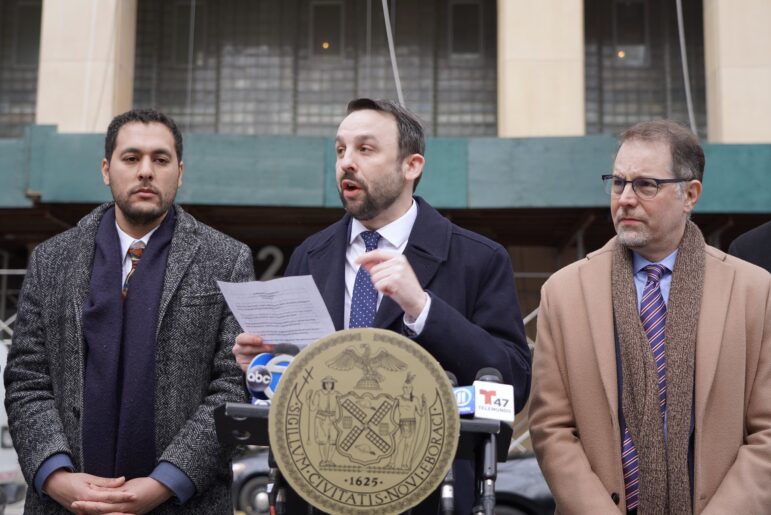
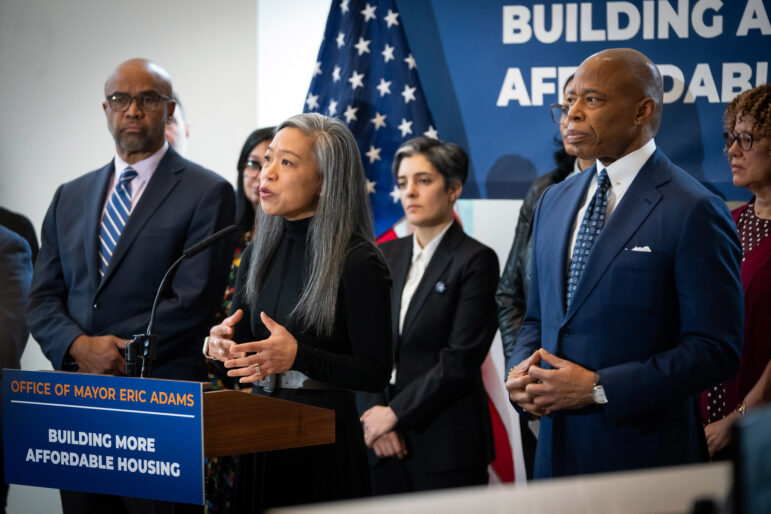
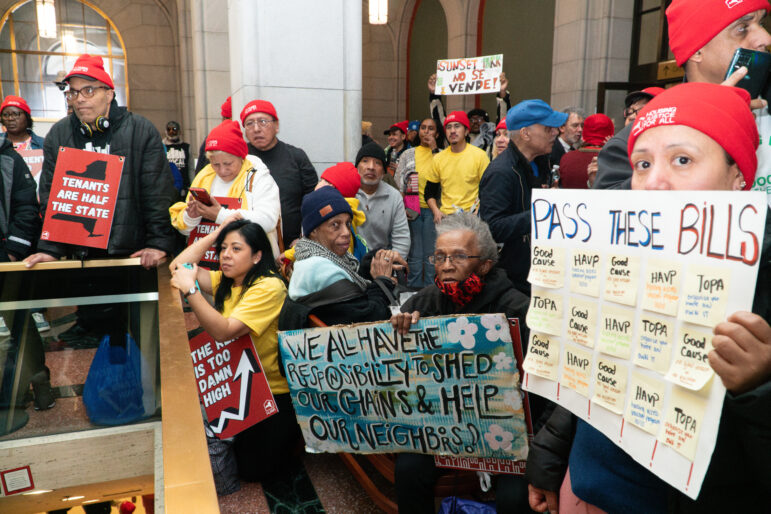


One thought on “New Exhibit Explores NYCHA’s Open Spaces, Which Once Made Neighbors Jealous”
Yes, housing is a human right …..but…..parking is not. NYCHA parking is also inexpensive especially compared to lot or garage parking in surrounding areas. If you’re already getting a break on rent should you be able to pay for a car, insurance and parking fees?
Imagine removing the NYCHA parking areas and building tiny homes for the homeless?